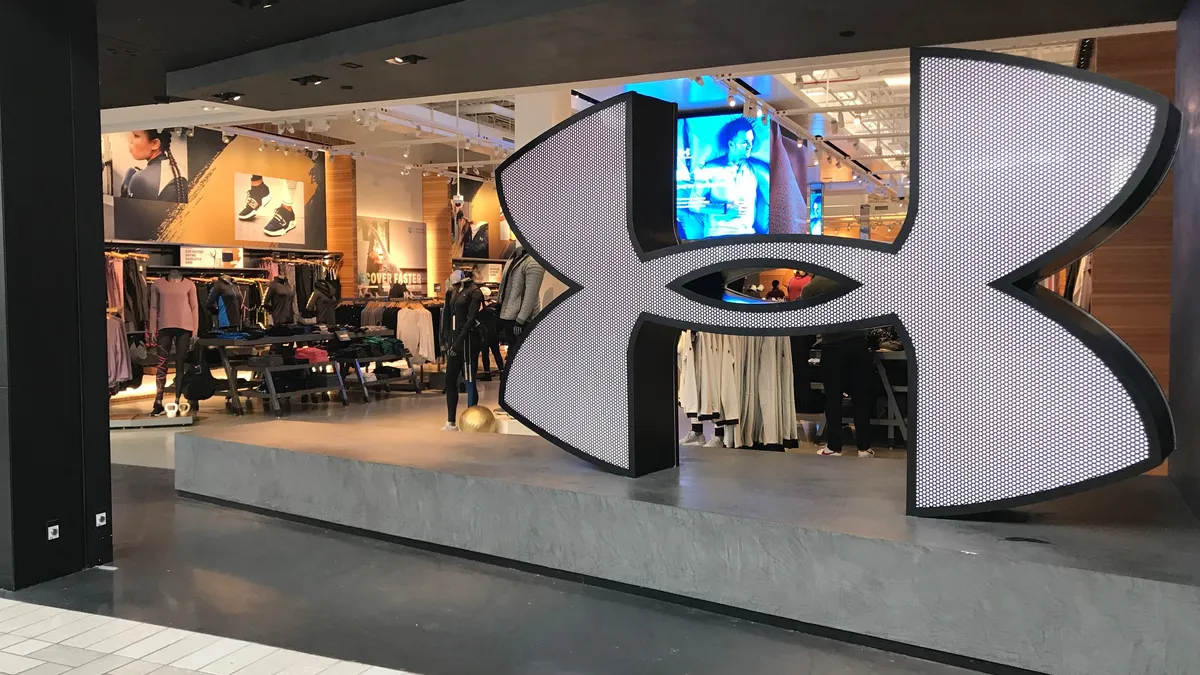Dive Brief:
-
Under Armour flew past revenue expectations for Q2, recording $708 million, as opposed to the FactSet consensus of $537 million, according to MarketWatch. Nevertheless, revenue was down 41% compared to the year prior, due to the impacts of the coronavirus.
-
Wholesale revenue was down 58% in the quarter, while DTC revenue fared slightly better, down 13%, thanks to e-commerce growth. Apparel revenue fell 42%, footwear fell 35% and accessories fell 47%. Revenue could continue to be down by as much as 20% to 25%, CFO David Bergman said on a conference call with analysts.
-
The athletics retailer highlighted key areas of focus at the moment: the rebuilding of the Under Armour brand, the evolution of its operating model, the prioritization of DTC sales and, through these efforts, improving profitability and "reconstructing our ability to drive sustainable shareholder value," CEO Patrik Frisk said on the call.
Dive Insight:
Despite performing above expectations, and recording a 280 basis point improvement to gross margin, Under Armour still suffered steep losses, including a $170 million operating loss and a $183 million net loss.
While the athletics retailer is focused on establishing itself in customer's minds as a premium performance brand, and executives said it succeeded in driving more brand engagement and consideration in the quarter, the pandemic has also left the company in a tough position to achieve its goal of moving more firmly into full-price sales rather than off-price.
Bergman noted that the company expects a "highly promotional environment" in the second half of the year, which will hurt gross margin. Executives also discussed the fact that there will be more volume in the off-price channel in general, as many retailers are likely to have excess inventory and look to off-pricers to offload it. As a result, even those sales might come in lower than usual.
Even with retail stores reopening after temporary closures, the company expects the pandemic to continue to impact the business, especially with the uncertainty in demand that it creates. The company cut back on bringing in new inventory because of the pandemic, but if trends improve more than it expects them to, Under Armour may not have enough product to meet demand, Bergman said.
However, the company also took the pandemic as a chance to accelerate some of its initiatives, including shifting to designing products in a 3D environment and a transition to completely digital sampling. The retailer also launched a new North America website last month, Frisk said, and the company has seen a rise in consumers engaging with its digital app community, including a more than 100% increase in consumers that have completed their first connected workout with Under Armour.
"In navigating this environment, our team continues to respond strategically and methodically – amplifying Under Armour's connection with our consumers through innovative digital activations, proactively managing our cost structure and working to harness our brand strength amid shifts in consumer behavior to emerge as a stronger company," Frisk said in a statement.
The company has $1.1 billion in cash and cash equivalents, and held relatively flat on its net cash and debt position from March 31 to June 30, Bergman said.
Under Armour did not address the recent Wells Notices it received from the SEC related to its accounting practices.















